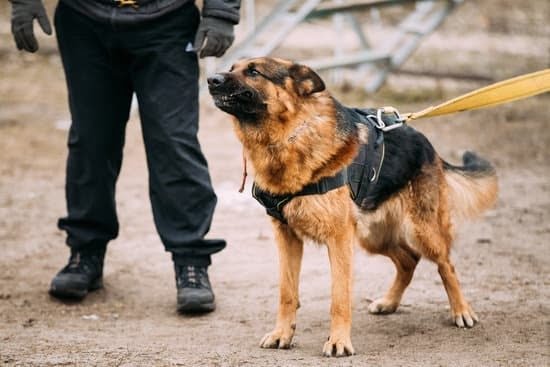Dog Crate Training Guide
Why Crate Train Your Dog?
There are many reasons to crate train your dog. Perhaps the most important reason is that it provides your dog with a safe, secure place to call his own. Dogs are den animals and instinctively want a place to hide or escape to when they feel unsafe. A crate provides that safe place.
Additionally, crate training can help with house training and can be a great place for your dog to nap or take refuge when he needs a break from the action.
How to Crate Train Your Dog
The key to successful crate training is to make the crate a positive experience for your dog. Here are a few tips to get started:
Start by introducing your dog to the crate slowly. Put a few treats inside and let him explore.
Once your dog is comfortable going into the crate, begin closing the door for short periods of time. Start with just a few seconds and gradually increase the amount of time.
If your dog starts to whine or bark, ignore him. Once he is quiet, let him out of the crate.
Make sure your dog has plenty of opportunities to go outside to relieve himself.
The crate should never be used as a punishment.
How to Crate Train a Puppy
Puppies are typically easier to crate train than older dogs. Here are a few tips to get started:
Start by putting a few treats inside the crate and letting your puppy explore.
Once your puppy is comfortable going into the crate, begin closing the door for short periods of time. Start with just a few seconds and gradually increase the amount of time.
If your puppy starts to whine or bark, ignore him. Once he is quiet, let him out of the crate.
Make sure your puppy has plenty of opportunities to go outside to relieve himself.
The crate should never be used as a punishment.
If you are having trouble crate training your puppy, consult with your veterinarian or an animal behaviorist.
Do You Need To Crate Train A Dog
?
The answer to this question is a resounding YES! Crate training is an essential part of owning a dog. It helps keep your dog safe and secure while you are away from home, and it can also help with house training.
The best way to crate train your dog is to start when he is a puppy. Make the crate a happy place for your dog by putting his favorite toys and treats inside. When you are not home, put your dog in the crate. He will soon learn that the crate is a safe and comfortable place to be.
If you have an older dog that has not been crate trained, it is not too late to start. Begin by putting your dog in the crate for short periods of time, and gradually increase the amount of time he spends in the crate. Be sure to give your dog plenty of positive reinforcement when he does well in the crate.
A crate is a valuable tool for dog owners and should be used whenever possible. It can help keep your dog safe and secure, and it can also help with house training.
How To Train Your Dog To Sleep In The Crate
1. Start by putting your dog’s crate in a quiet, comfortable spot in your home.
2. Place a soft blanket and a few toys in the crate.
3. Feed your dog in the crate, and provide water.
4. Close the crate door, but don’t force your dog to stay in the crate.
5. Gradually increase the amount of time your dog spends in the crate.
6. Reward your dog for entering the crate and for staying calm in the crate.
7. If your dog starts to bark or whine in the crate, don’t give in and let him out. Wait until he stops barking or whining, then release him from the crate.
8. Never use the crate as a punishment.
Why Do People Crate Train Dogs
?
There are many reasons why people crate train their dogs. Some people crate train their dogs because they think it is the only way to train them, while others do it because they think it is the best way to housebreak them. There are also people who crate train their dogs because they think it is the only way to keep them safe.
The truth is that there are many benefits to crate training your dog. Crate training can help housebreak your dog more quickly, and it can also help to prevent your dog from getting into trouble when you’re not home. Crating your dog can also help to make traveling with your dog easier, and it can help your dog to feel more secure and comfortable in unfamiliar environments.
The best way to crate train your dog is to start when he is young. Puppies are usually easy to crate train, and they can be taught to love their crate as their own special place. Older dogs can also be crate trained, but it may take a little more time and patience.
The key to successful crate training is to make sure that your dog has plenty of opportunities to relieve himself outside, and that he has plenty of toys and chew items to keep him occupied while he is in the crate. You should also make sure that your dog has plenty of exercise, and that he is getting enough mental stimulation.
If you are thinking about crate training your dog, there are a few things you should keep in mind. First, you should never use the crate as a form of punishment. Second, you should never leave your dog in the crate for too long. Third, you should make sure that your dog has a comfortable place to sleep in his crate.
If you follow these tips, you can crate train your dog with ease and help him to become a well-adjusted member of your family.
Crate Training A Rescue Dog
There are a lot of benefits to crate training your rescue dog. First and foremost, it can help with potty training. Dogs naturally don’t like to soil their sleeping area, so by crating your dog, you are essentially creating a designated potty space. This can help speed up the potty training process.
Crate training can also be helpful in terms of obedience training. Dogs that are used to being crated are often more willing to follow commands, since they know that they will be rewarded with access to their crate once they have completed their task.
Finally, crate training can be a lifesaver when it comes to managing a new dog in the home. It can provide a safe and comfortable place for your dog to retreat to when he or she is feeling overwhelmed or scared. This can help to prevent unwanted behaviors, such as chewing on furniture or barking incessantly.
If you’re new to crate training, here are a few tips to help you get started:
1. Start by introducing your dog to the crate slowly. Put a few treats inside the crate and encourage your dog to go inside and get them. Once your dog is comfortable going into the crate, start closing the door for a few seconds at a time. Gradually increase the amount of time that the door is closed.
2. Make the crate a positive place for your dog. Don’t use the crate as a punishment tool – rather, use it as a place of refuge and safety.
3. Don’t leave your dog in the crate for too long. A good rule of thumb is to not leave your dog in the crate for more than four hours at a time.
4. Be sure to provide plenty of positive reinforcement when your dog does something good. This will help to encourage your dog to continue following the crate training commands.

Welcome to the blog! I am a professional dog trainer and have been working with dogs for many years. In this blog, I will be discussing various topics related to dog training, including tips, tricks, and advice. I hope you find this information helpful and informative. Thanks for reading!





